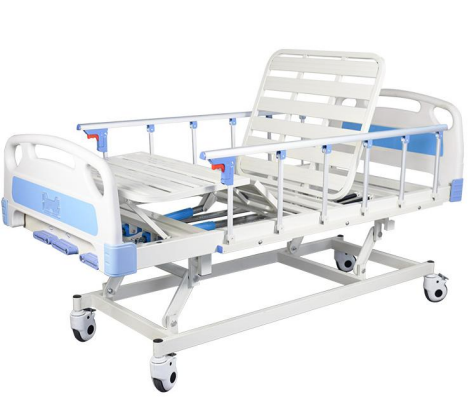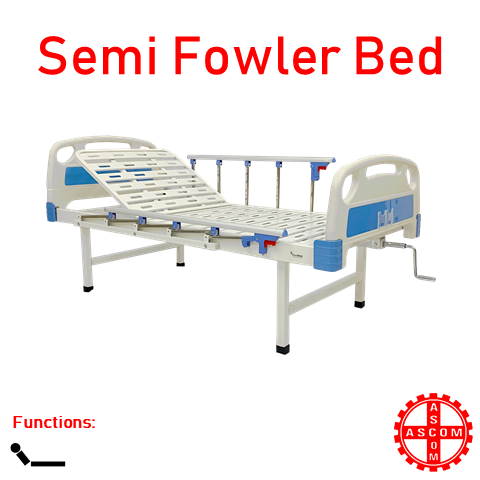The Main Principles Of Hospital Beds For Home Use
The Main Principles Of Hospital Beds For Home Use
Blog Article
Some Known Factual Statements About Hospital Beds For Home Use
Table of ContentsFascination About Hospital Beds For Home UseThe Hospital Beds For Home Use StatementsSome Ideas on Hospital Beds For Home Use You Need To KnowThe 10-Minute Rule for Hospital Beds For Home Use7 Simple Techniques For Hospital Beds For Home UseFascination About Hospital Beds For Home UseThe Basic Principles Of Hospital Beds For Home Use
There are three main kinds of medical facility beds: manual, semi-electric, and fully-electric. Even more kinds of medical beds exist and they are listed below. These beds make use of hand cranks to adjust the bed's height and elevate and reduce the head and the foot. Hand cranks are usually discovered at the foot of the bed and require a person that is literally efficient in operating.
Semi-electric beds have an electrical motor to increase and lower the head and foot sections of the bed. Clients and caregivers readjust the placing by pressing buttons utilizing a hand necklace. The height of the bed is readjusted by hand with a hand crank. Full-electric beds have an electrical motor that can elevate the head and foot sections of the bed along with the entire elevation and positioning of the bed.
Hospital Beds For Home Use Things To Know Before You Buy
Some models can also relocate into even more settings, such as the Trendelenburg (tilt) setting. There are several kinds of health center beds, each developed to meet certain individual demands. Here are some typical types: This is the most typical kind of hospital bed, developed for basic clinical use. It has a manual or electrically flexible headrest, footrest, and height.
Lower to the ground than a common bed. This type of bed is made for bigger patients, with a bigger frame and higher weight capacity than a conventional bed.
This kind of bed is developed for seriously unwell patients who require open tracking and specialized medical devices such as ventilators and mixture pumps. This sort of bed is developed for use throughout labor and distribution, with adjustable placements and attributes to support the mother and baby during the birth procedure.
The Facts About Hospital Beds For Home Use Revealed
Multiple function and the accessories execute broadening grip to different parts of the vertebra and the extremities without moving the human body. These are just a couple of examples of the kinds of hospital beds offered. The certain sort of bed used will depend on the person's problem, medical needs, and various other variables.
Here is the important things you require to understand. A one-function hospital bed is a medical bed that permits a person to move only the head or foot area up or down. A 2 feature healthcare facility bed typically describes a sort of clinical bed that has two adjustable functions to aid people in medical facilities or care facilities.

Everything about Hospital Beds For Home Use
A 7-function ICU bed is a type of clinical bed that offers several adjustable features to support critically unwell individuals in a critical care unit (ICU) (hospital beds for home use). The 7 features generally include: Back-rest adjustment: The backrest can be gotten used to different angles to assist the individual stay up or exist down comfortably
Elevation modification: The bed can be raised or lowered to make it less complicated for clients to enter and out of bed, and for caretakers to supply treatment. Trendelenburg placement: The entire bed can be tilted to promote blood flow and blood circulation in the body. Reverse why not look here Trendelenburg placement: The bed can likewise be slanted in the contrary instructions to promote blood circulation and blood circulation in the top body.
1. What Dimension is a Medical Facility Bed? 2. Just how much Does a Hospital Bed Price? 3. Why Do Hospital Beds Have Side Rails? 4. What Are The Main Healthcare Facility Bed Components?. While more budget-friendly than electric models, these beds need physical effort for modifications. The major benefits of manual beds are their price and integrity, as they do not count on power. However, the need for hands-on initiative can be a restriction in circumstances where fast modifications are necessary or where caregivers encounter physical obstacles.
Not known Factual Statements About Hospital Beds For Home Use
They are appropriate for clients that call for marginal rearranging for convenience or clinical demands. Semi-electric hospital beds provide a balance of guidebook and electrical controls. The head and foot areas are generally adjusted with electrical controls, while the elevation is adjusted manually. These beds supply an ideal happy medium between manual and fully electrical alternatives, providing convenience of use without the complete cost of electric versions.
Semi-electric beds are fit for clients who require modest changes to the head and foot areas yet can manage without constant height adjustments. This makes them a cost-effective service for those seeking comfort and benefit without the demand for constant repositioning. Completely electrical medical facility beds feature electrical controls for smooth modifications to the elevation, head, and foot areas.
Specialty health center beds, such as ICU beds, long-lasting treatment beds, and bariatric beds, are thoroughly developed to deal with particular medical requirements. These beds use customized take care of diverse client teams, improving both outcomes and convenience. In the complying with sections, we will certainly check out the primary types of specialty medical facility beds, detailing their particular advantages and applications.
With years of experience in manufacturing electrical direct actuators - hospital beds for home use and close collaboration with the healthcare industry, TiMOTION is well-positioned to provide reliable medical care solutions. Our up and down incorporated company manages every step of the manufacturing procedure, from layout to actuator assembly, guaranteeing we supply extraordinary worth and tailored services tailored to your specific needs
8 Simple Techniques For Hospital Beds For Home Use

To find out more about integrating these go to these guys innovations right into your items, call us today. Additional reading:.
Information is sourced from the Medicare Expense Record. Accessed January 2025. Temporary acute treatment medical facilities have the greatest average number of beds at 187. They are one of the most typical kind of medical facility in the united state and make up even more than 50% of U.S. healthcare facilities. Kid's hospitals have 178 beds usually and VA health centers typical 175 beds.

The Hospital Beds For Home Use Ideas
A healthcare facility bed is a bed made especially for medical purposes. It is not only a place for patients to relax, but also a system for clinical procedures. Unlike regular home beds, health center beds generally have adjustable attributes, which can assist in medical personnel to make different changes according to the demands of clients, such as altering the elevation, inclination, and assistance angle of the back and legs of the bed.
Report this page